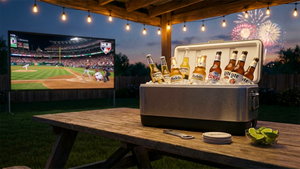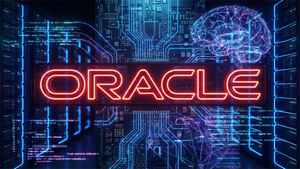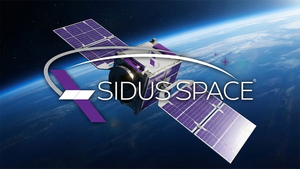
In a bold move that could fundamentally reshape the future of transportation and industry, Tesla (NASDAQ: TSLA) is aggressively pursuing a dual strategy centered on its ambitious Robotaxi service and the burgeoning capabilities of its Optimus humanoid robot. This integrated vision, championed by CEO Elon Musk, positions the electric vehicle giant not merely as an automaker, but as a leader in artificial intelligence and automation, aiming to deliver fully autonomous ride-hailing and a versatile robotic workforce. As Tesla pushes the boundaries of what's possible, traditional automotive manufacturers find themselves at a crucial crossroads, compelled to adapt or risk being left behind in a rapidly evolving landscape.
Tesla's audacious plans are drawing both fervent enthusiasm and cautious skepticism from investors and industry observers alike. The promise of a fully driverless, on-demand ride-hailing network, complemented by a robotic labor force capable of performing a myriad of tasks, paints a picture of unprecedented efficiency and profitability. However, the path to realizing this vision is fraught with technological hurdles, stringent regulatory challenges, and the inherent complexities of deploying cutting-edge AI in real-world, dynamic environments. The coming years will be critical in determining whether Tesla's grand designs will truly disrupt the global automotive and labor markets, or if the challenges prove too formidable for even the most innovative of companies.
The Dawn of Driverless and Robotic Labor: Tesla's Aggressive Bet
Tesla's push into autonomous ride-hailing and humanoid robotics is gaining momentum, marked by several pivotal developments that underscore its transformative ambitions. At the heart of its strategy lies the Cybercab robotaxi, officially unveiled at the "We, Robot" event on October 10, 2024, in Los Angeles. This purpose-built, two-passenger vehicle conspicuously lacks a steering wheel and pedals, signaling Tesla's commitment to a truly driverless future. Alongside the Cybercab, CEO Elon Musk also showcased a "Robovan" concept for larger autonomous transport, further solidifying the company's intent to capture a broad segment of the future mobility market. Tesla projects Cybercab production to commence "before 2027," targeting an accessible price point under $30,000.
Complementing its Robotaxi vision, Tesla continues to rapidly advance its Optimus humanoid robot project. On December 12, 2023, the company revealed Optimus Gen 2, demonstrating significant leaps in hardware and mobility. This iteration boasts Tesla-designed actuators and sensors, a 2-Degree of Freedom (DoF) actuated neck for more natural movements, and a substantial 10-kilogram weight reduction. Crucially, Optimus Gen 2 exhibits a 30% increase in walking speed and enhanced dexterity, featuring 11-DoF hands with tactile sensing on all fingers, allowing for delicate manipulations like picking up an egg. Tesla aims for "low production" of Optimus for internal use within its factories in 2025, with plans to scale production dramatically, targeting 50,000 to 100,000 units annually by 2027, and potentially 1 million units within the next five years, each estimated to cost between $20,000 and $30,000.
These ambitious rollouts are underpinned by Tesla's Full Self-Driving (FSD) software, which continues to evolve. While FSD (Supervised) is available in several countries and benefits from billions of miles of real-world driving data, it still requires active driver supervision. However, the company is relentlessly iterating, with FSD Version 12.5.2 released in September 2024, and Version 13 slated for October 2024, promising significant improvements in autonomous capabilities and a six-fold reduction in necessary interventions. A limited robotaxi pilot program launched on June 22, 2025, in Austin, Texas, using autonomous Tesla Model Y vehicles within a geofenced area, offering paid rides to an invite-only group with a safety monitor present. This gradual rollout is a pragmatic step towards fully unsupervised operations, even as regulatory bodies, particularly in California, express "alarm and confusion" over Tesla's lack of permits for truly driverless services, highlighting a fragmented and challenging regulatory environment.
Initial market reactions to these developments have been a mixed bag. The unveiling of the Cybercab in October 2024 saw Tesla's stock price tumble by as much as 9%, suggesting that investors were largely underwhelmed by the distant production timeline and persistent doubts about FSD's readiness for unsupervised operation. Conversely, Elon Musk's September 2025 assertion that Optimus could eventually represent "a staggering 80% of Tesla's overall value," coupled with aggressive production targets, sparked a robust positive market response, with Tesla's stock surging over 20% in five trading days. This dichotomy highlights that while the market harbors skepticism about the immediate feasibility of Robotaxi, there is significant long-term belief in the transformative potential and profitability of Tesla's integrated AI and robotics ecosystem, particularly with Optimus.
Shifting Tides: Who Wins and Who Risks Losing in the Autonomous Race
The race for autonomous driving and robotics is creating a clear delineation between potential winners and those facing significant disruption. At the forefront, Tesla (NASDAQ: TSLA) stands as a high-stakes contender. If its Robotaxi network materializes at scale, offering highly affordable and environmentally friendly on-demand transportation, it could unlock a massive recurring revenue stream, fundamentally transforming urban mobility. The successful deployment of Optimus, a general-purpose humanoid robot, could similarly revolutionize manufacturing, logistics, and even domestic labor, addressing critical workforce shortages and opening up multi-trillion-dollar market opportunities. Tesla's vertically integrated approach, developing its own AI chips and leveraging a vast trove of real-world driving data from its global fleet, provides a distinct advantage if its vision-only system proves robust enough for full autonomy.
In stark contrast, traditional automotive manufacturers are generally pursuing a more cautious, often diversified, and partnership-driven approach. Companies like General Motors (NYSE: GM), through its subsidiary Cruise, initially focused on robotaxi services but have recently realigned, exiting the pure robotaxi business to integrate Cruise's AV expertise into personal vehicles and enhance advanced driver-assistance systems (ADAS) like Super Cruise. Similarly, Ford (NYSE: F), after investing heavily in Argo AI (which has since ceased operations), has pivoted towards partnerships with tech giants like Mobileye (NASDAQ: MBLY) and Nvidia, focusing on developing and integrating advanced driver-assist features into its vehicles, such as BlueCruise, which uses a combination of cameras and sensors. Mercedes-Benz (XETRA: MBG) has achieved a significant milestone with its Level 3 autonomous "DRIVE PILOT" system, which uses a comprehensive sensor suite including lidar, cameras, and radar, highlighting a multi-sensor philosophy that prioritizes conditional automation and safety. BMW (ETR: BMW) also champions collaborations, partnering with Mobileye, Intel, and Qualcomm to develop Level 3 and Level 4 autonomous capabilities, expected by 2025. These traditional OEMs are betting on a more incremental, multi-sensor path to autonomy, emphasizing reliability and regulatory compliance over Tesla's "move fast and break things" mentality.
The ripple effects extend to ride-hailing companies like Uber (NYSE: UBER) and Lyft (NASDAQ: LYFT). While they stand to gain from integrating autonomous vehicles into their fleets, potentially reducing operational costs by eliminating human drivers and enabling 24/7 service, Tesla's direct robotaxi network poses an existential threat. If Tesla owners can add their personal vehicles to an autonomous network to generate income, it could fundamentally disrupt existing ride-sharing models and significantly depress earnings for human gig workers. Uber and Lyft are actively pursuing partnerships with AV developers like Waymo (Alphabet (NASDAQ: GOOGL)), which operates a robust multi-sensor approach and is expanding rapidly, demonstrating a proactive strategy to adapt to the driverless future. However, the profitability of AVs remains a distant goal, as noted by Uber's CFO, indicating that the transition will be complex and costly.
Beyond the auto industry, tech players like Waymo (Alphabet (NASDAQ: GOOGL)) emerge as strong contenders. Waymo's comprehensive sensor suite, integrating lidar, radar, and numerous cameras, provides a robust and safety-first approach to autonomous driving, already operating fully driverless services in several U.S. cities. Mobileye (NASDAQ: MBLY), an Intel subsidiary, also stands to gain as a critical supplier of ADAS and autonomous driving systems, with its technology integrated into a vast number of vehicles globally. Companies like Nvidia (NASDAQ: NVDA) and Qualcomm (NASDAQ: QCOM), providing powerful AI chips and platforms, are also poised to benefit from the overall growth of the AV and robotics market, supplying the computational backbone for these advanced systems. Conversely, the biggest loser could be Tesla itself, if its vision-only approach proves insufficient for widespread Level 4/5 autonomy, or if its ambitious timelines continue to slip significantly, undermining its valuation which is increasingly tied to these futuristic ventures.
Beyond the Wheel: Industry-Wide Tremors and Societal Shifts
Tesla's dual-pronged assault on traditional automotive and labor markets is not just about new products; it represents an acceleration of several profound industry trends with far-reaching societal implications. At its core, Tesla's vision exemplifies the deep integration of Artificial Intelligence (AI) in automotive. The company's vision-first approach, leveraging vast datasets from its global fleet to train sophisticated neural networks for Full Self-Driving (FSD), pushes the boundaries of how AI can interpret and navigate complex real-world environments. This continuous refinement of AI algorithms is not only central to autonomous driving but also extends to optimizing manufacturing processes and enhancing in-vehicle experiences across the industry.
Simultaneously, the rise of robotics in logistics and manufacturing is gaining unprecedented momentum, with Optimus at its vanguard. Humanoid robots like Optimus are designed to tackle repetitive, mundane, or hazardous tasks, promising to revolutionize factory floors, warehouses, and even service industries. This trend aligns with the broader push towards automation to address labor shortages, increase efficiency, and reduce costs. While industrial robots have been a staple for decades, Optimus’s general-purpose humanoid form and integration with advanced AI could unlock a new wave of automation, potentially driving a significant increase in productivity and reshaping the global workforce by taking on roles traditionally performed by humans.
The Robotaxi initiative further accelerates the fundamental shift towards Mobility-as-a-Service (MaaS). This paradigm moves away from individual car ownership towards on-demand, flexible transportation solutions. If Tesla's Robotaxi network proves scalable and economically viable, it could make personal vehicle ownership in urban centers increasingly obsolete, alleviating traffic congestion, reducing emissions, and freeing up vast swathes of land currently dedicated to parking. This transition threatens to disrupt not only traditional car sales but also the existing ride-hailing ecosystem, forcing incumbent players to rapidly adapt or face irrelevance in a market where autonomous, cost-effective transport becomes the norm.
However, this technological leap is not without its significant regulatory and policy implications. Ensuring the safety of autonomous vehicles and humanoid robots is paramount, and Tesla's FSD technology has faced intense scrutiny from regulatory bodies like the National Highway Traffic Safety Administration (NHTSA) due to concerns about incidents and the absence of full regulatory approval for truly driverless operations in many regions. Beyond safety, data privacy looms large. Tesla's extensive data collection through vehicle sensors and cameras raises critical questions about how personal and environmental data is collected, stored, and used, necessitating robust legal frameworks and ethical guidelines to prevent misuse. Furthermore, the ethical considerations are profound, particularly concerning job displacement as robots and autonomous systems take over human tasks, requiring proactive policy-making for workforce retraining and societal adaptation. Accountability in the event of accidents or malfunctions also remains a complex legal and ethical challenge.
Historically, such transformative shifts have been met with both excitement and trepidation, echoing the Industrial Revolution's impact on manufacturing and labor, or the advent of the personal computer reshaping information and communication. The emergence of the automobile itself dramatically altered urban planning, infrastructure, and social norms, much like autonomous vehicles are poised to do. Tesla's bold strategy is a textbook example of disruptive innovation, challenging established norms and forcing industries to rethink their core business models, similar to how companies like Amazon revolutionized retail or Uber transformed personal transport. The ability of regulatory bodies to keep pace with these rapid technological advancements will be crucial in shaping the trajectory and societal acceptance of this new autonomous era.
The Road Ahead: Navigating an Autonomous Future
The immediate future for Tesla's (NASDAQ: TSLA) ambitious Robotaxi and Optimus initiatives is a complex tapestry of promising developments and significant hurdles. In the short term, Tesla is focused on refining its Full Self-Driving (FSD) software and expanding its supervised robotaxi pilot programs, like the one recently launched in Austin, Texas. The goal of achieving unsupervised autonomous driving by mid-2025 remains aggressive, challenged by a history of delayed timelines, the technical complexities of a vision-only system, and a patchwork of stringent, often conflicting, regulatory requirements across different jurisdictions. On the robotics front, the focus for Optimus is internal deployment within Tesla's own factories by the end of 2025, using thousands of units to perform repetitive tasks, which is crucial for real-world testing and refinement before wider commercial availability in early 2026. However, production bottlenecks, technical challenges like overheating, and intense competition from other robotics companies represent considerable short-term obstacles.
Looking further out, the long-term possibilities for both ventures are transformative, with the potential to fundamentally reshape multiple industries and societal norms. A fully realized Robotaxi network could establish Tesla as a dominant force in autonomous ride-hailing, generating recurring, high-margin software revenue that could significantly boost its valuation, with some analysts projecting tens of billions in annual revenue by 2030. The autonomous ride-hailing market itself is forecast to grow into a multi-hundred-billion-dollar industry by the end of the decade, making this a critical battleground. Similarly, Optimus holds the promise of revolutionizing global labor. Elon Musk envisions a multi-trillion-dollar market for humanoid robots, with Optimus filling labor shortages and dramatically increasing productivity across manufacturing, logistics, healthcare, and even domestic services, potentially accounting for a staggering 80% of Tesla's future valuation.
To navigate this landscape, Tesla will likely need strategic adaptations. Its primary pivot is already underway, transitioning from purely an EV manufacturer to an AI and robotics powerhouse. This requires continued heavy investment in AI infrastructure, potentially including new partnerships for advanced chips and leveraging its Dojo supercomputer. Addressing regulatory concerns may necessitate greater transparency, a more collaborative approach with authorities, and possibly even a reconsideration of its strict "vision-only" stance to incorporate additional sensor technologies like lidar, which competitors like Waymo and Cruise heavily utilize. Building public trust through transparent safety reporting will be paramount for widespread adoption. Competitors in the autonomous driving space, such as Waymo (Alphabet (NASDAQ: GOOGL)) and Cruise (General Motors (NYSE: GM)), will likely continue their strategy of gradual expansion in controlled environments, emphasizing safety and regulatory compliance. Traditional automakers will accelerate their own AI and AV initiatives, either through increased in-house R&D or by forging new strategic alliances with tech firms. In robotics, companies like Figure AI and established players like Boston Dynamics, alongside various Chinese firms, will intensify competition, focusing on cost reduction, scalability, and enhanced AI capabilities.
The market opportunities are immense: increased safety and efficiency in transport, new business models like subscription services for mobility, enhanced accessibility for non-drivers, and job creation in high-tech sectors. For robotics, the potential to address labor shortages, boost productivity, and open entirely new economies is staggering. However, significant challenges persist. Technologically, overcoming "edge cases," navigating adverse weather, and ensuring robust performance remain critical. Regulatory inconsistencies and the complex issues of liability continue to hinder widespread deployment. Public perception, heavily influenced by safety incidents, is a fragile yet crucial factor. For robotics, the technical complexity of creating dexterous, balanced, and general-purpose humanoids, coupled with the high costs of development and mass production, represent formidable barriers. Ultimately, the coming years will present a spectrum of outcomes, from an "aggressive adoption" scenario driven by rapid technological and regulatory breakthroughs, leading to widespread Level 4 and 5 autonomy and a thriving humanoid robot market, to "delayed adoption" if technological hurdles or public distrust prove too significant. Tesla's success hinges on its ability to execute its ambitious vision while effectively managing these complex opportunities and challenges.
Conclusion: A Future Forged in AI and Automation
Tesla's audacious Robotaxi and Optimus vision represents a pivotal moment in the evolution of the automotive and technology sectors. The company's unyielding commitment to a future defined by artificial intelligence and automation positions it as a potential disruptor of unprecedented scale, aiming to redefine both how we move and how we work. While the journey is fraught with technological complexities, regulatory labyrinth, and ethical dilemmas, the sheer ambition and potential rewards are undeniable. The intertwining of autonomous driving with humanoid robotics points towards an integrated ecosystem where "physical AI" reshapes urban landscapes and industrial operations, moving Tesla far beyond its origins as an electric car manufacturer.
For the market, the coming months and years will be a critical test of execution. Tesla's ability to transition from pilot programs to scalable, profitable deployments of Robotaxis, and from internal testing to mass production of Optimus, will dictate its long-term trajectory. Traditional automakers are adapting, often through multi-sensor approaches and strategic partnerships, acknowledging the irreversible shift towards greater automation, but with a more measured pace. Ride-hailing companies are integrating autonomous fleets, while tech giants continue to innovate in AV and robotics hardware and software. The competitive landscape is intensifying, forcing every player to continuously innovate and strategically pivot.
Investors should watch for tangible progress on several fronts: the expansion and safety record of Tesla's unsupervised FSD, the production scalability and performance of Optimus in real-world environments, and most importantly, the clear path to regulatory approvals for truly driverless operations. The valuations of companies in this space will increasingly be tied not just to current revenue, but to the perceived likelihood of realizing these futuristic visions. As the lines between automotive, software, and robotics blur, the companies that can seamlessly integrate these technologies, navigate the regulatory maze, and earn public trust will ultimately emerge as the architects of the autonomous future, reshaping industries and society for decades to come.




